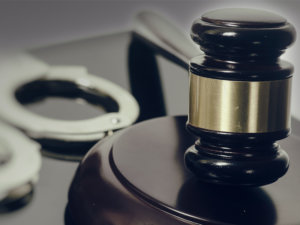The Law Firm of Grasing & Associates
20 YEARS CIVIL LITIGATION & TRIAL LAW
EXPERIENCE
The Law Firm of Grasing & Associates represents individuals, families, businesses and insurance companies throughout New York. The law firm is committed to providing quality legal services in the areas of insurance law, civil litigation and appeals, and estate planning. The experience our attorneys have in handling a wide array of cases is what we use to fight for our clients. It has also taught us the importance of working with our clients, as a team, to get them the outcome they deserve. This is what we want our clients to see and appreciate.
OUR SERVICES
We invite you to call The Law Firm of Grasing & Associates at 631-240-4480 to schedule your free consultation.
OUR PRACTICE AREAS
NEW YORK ATTORNEYS
 Property and Casualty claims, the policy provisions regarding them, and the law governing them can be complicated. Our attorneys have extensive experience representing insurance companies, which helps us evaluate whether an insured is covered for a first-party property claim or third-party casualty claim. We also have experience being retained by insurance companies to represent and protect their insureds once they have been sued.
Property and Casualty claims, the policy provisions regarding them, and the law governing them can be complicated. Our attorneys have extensive experience representing insurance companies, which helps us evaluate whether an insured is covered for a first-party property claim or third-party casualty claim. We also have experience being retained by insurance companies to represent and protect their insureds once they have been sued.
Free Consultation
 We are retained by insurance companies to represent their insureds who have been sued for causing personal injury or property damage to others. We defend insureds against lawsuits arising out of motor vehicle accidents, construction accidents, slips and falls, and premises liability. We work together as a team to fight for the best outcome.
We are retained by insurance companies to represent their insureds who have been sued for causing personal injury or property damage to others. We defend insureds against lawsuits arising out of motor vehicle accidents, construction accidents, slips and falls, and premises liability. We work together as a team to fight for the best outcome.Free Consultation
FEBRUARY 28, 2014
HOW TO NEGOTIATE A BUSINESS DEAL: THINK WIN-WIN AND BATNA
 A recent news story caught my eye because it shows the importance of a win-win negotiation strategy and the need to accurately assess your BATNA, or best alternative to a negotiated agreement. Though it deals with personal injury claims in Kansas, it can teach a lot to businesses in New York and across the country.
A recent news story caught my eye because it shows the importance of a win-win negotiation strategy and the need to accurately assess your BATNA, or best alternative to a negotiated agreement. Though it deals with personal injury claims in Kansas, it can teach a lot to businesses in New York and across the country.
The state legislature in Kansas is considering a few important changes to personal injury litigation: increasing the cap on non-economic damages while at the same time changing the rules of evidence to allow a jury to hear whether a plaintiff has had losses covered by other, or collateral, sources including insurance, and to make it more difficult to use questionable expert testimony. To put it another way, the proposed rule changes would allow personal injury plaintiffs to collect more for pain and suffering while arguably making those harder to prove.
According to the story in the February 28, 2014, Claims Journal, Kansas has not raised its cap on damages for pain and suffering since the 1980’s. Though the cap was found constitutional by the state’s highest court in 2012, the decision disapprovingly noted the long delay in raising the cap. The warning evidently was heard loud and clear. The story notes that the chairman of the state senate judiciary committee, Jeff King, considers it only a matter of time before the current cap, of $250,000, is overturned as being too low. That is why the current bill would increase the cap, in stages, to $350,000.
Continue Reading
Free Consultation
OLD CASES, SAME RULE: EXPERTS’ AFFIDAVITS IN OPPOSITION TO MOTIONS FOR SUMMARY JUDGEMENT IN NEW YORK.
 We spent our last entry talking about when a trial court faced with a motion for summary judgement can consider an affidavit from an expert even though the expert was not disclosed until after the Note of Issue and Certificate of Readiness were filed. The answer, more often than not, at least in the Appellate Division, Second Department in New York: When the expert makes a difference by establishing the existence of a material issue of triable fact. See Rivers v. Birnbaum, 102 A.D.3d 26, 953 N.Y.S.2d 232 (2nd Dept. 2012), and Begley v. City of New York, 111 A.D.3d 5, 972 N.Y.S.2d 48, 72 (2nd Dept. 2013), leave to appeal denied, 23 N.Y.3d 903, 988 N.Y.S.2d 130 (2014).
We spent our last entry talking about when a trial court faced with a motion for summary judgement can consider an affidavit from an expert even though the expert was not disclosed until after the Note of Issue and Certificate of Readiness were filed. The answer, more often than not, at least in the Appellate Division, Second Department in New York: When the expert makes a difference by establishing the existence of a material issue of triable fact. See Rivers v. Birnbaum, 102 A.D.3d 26, 953 N.Y.S.2d 232 (2nd Dept. 2012), and Begley v. City of New York, 111 A.D.3d 5, 972 N.Y.S.2d 48, 72 (2nd Dept. 2013), leave to appeal denied, 23 N.Y.3d 903, 988 N.Y.S.2d 130 (2014).
Rivers v. Birnbaum, supra, and Begley v. City of New York, supra, were not the actual sea changes they might appear to be at first. Though important decisions, the rule they enunciated was applied in many cases before they were decided and the ones in which it was not applied were the exceptions that proved the rule.
King v. Gregruss Mgmt. Corp., 57 A.D.3d 851, 852-53, 870 N.Y.S.2d 103 (2nd Dept. 2008), was a personal injury action in which the plaintiff was injured when he tried to cut open a steel drum containing windshield washer fluid with an electric saw. The Second Department held that the trial court should not have considered the affidavit from the plaintiff’s expert in opposition to the defendants’ various motions for summary judgement and should have precluded the expert from testifying at any stage of the proceedings.
The expert in King v. Gregruss Mgmt. Corp., supra, undoubtedly would have made a difference. It just appears that there was no way to verify the facts on which his opinion was based and his testimony actually was more about basic, critical, and unverifiable facts, than scientific opinion. All told, the case is a fine example of a plan too smart by half, and illustrative of the type of behavior that more often than not will be penalized, if for no other reason than it should be. It is that behavior, more than the simple late disclosure of the expert, which prevented the expert’s affidavit from being considered:
Continue Reading
Posted in: Business Litigation and Trials
Tagged: “Motion Practice” and Experts
AUGUST 20, 2014
 It has been some time since we last spoke about the use of experts to oppose motions for summary judgement in New York. The topic, however, is still relevant. Some continue to believe there is a hard and fast rule, at least in the Appellate Division, Second Department, which forbids a trial court from considering an affidavit from an expert unless the party offering the expert’s affidavit served full expert’s disclosure pursuant to CPLR 3101(d)(1) prior to the filing of the Note of Issue and Certificate of Readiness or at least moved to vacate the Note of Issue and Certificate of Readiness if they had not served expert’s disclosure by then. As we pointed out in our last entries on the subject, there is no such concrete rule and there never really was. A case that should go to trial most often does; it withstands a motion for summary judgement, unless the party who uses the affidavit nefariously refused to disclose the expert in time.
It has been some time since we last spoke about the use of experts to oppose motions for summary judgement in New York. The topic, however, is still relevant. Some continue to believe there is a hard and fast rule, at least in the Appellate Division, Second Department, which forbids a trial court from considering an affidavit from an expert unless the party offering the expert’s affidavit served full expert’s disclosure pursuant to CPLR 3101(d)(1) prior to the filing of the Note of Issue and Certificate of Readiness or at least moved to vacate the Note of Issue and Certificate of Readiness if they had not served expert’s disclosure by then. As we pointed out in our last entries on the subject, there is no such concrete rule and there never really was. A case that should go to trial most often does; it withstands a motion for summary judgement, unless the party who uses the affidavit nefariously refused to disclose the expert in time.
There have been a series of decisions that have clarified that this is the rule. The first was Rivers v. Birnbaum,102 A.D.3d 26, 953 N.Y.S.2d 232 (2nd Dept. 2012). Another, more recent example, is Begley v. City of New York, 111 A.D.3d 5, 972 N.Y.S.2d 48, 72 (2nd Dept. 2013), leave to appeal denied, 23 N.Y.3d 903, 988 N.Y.S.2d 130 (2014), which is especially instructive because of the way it summarizes the reasons for the rule. It holds, in relevant part:
Continue Reading
Posted in: Business Litigation and Trials
Tagged: “Motion Practice” and Experts
AUGUST 8, 2014
HOW LEARNING ABOUT PLAY CAN HELP YOU PICK A JURY
 Have you ever wanted to do absolutely nothing: nothing real, nothing hard, nothing serious, at least not for a little while? Maybe lie down on the beach, read a good book, go play a round of miniature golf with your family and friends? Just be a little silly, just a little?
Have you ever wanted to do absolutely nothing: nothing real, nothing hard, nothing serious, at least not for a little while? Maybe lie down on the beach, read a good book, go play a round of miniature golf with your family and friends? Just be a little silly, just a little?
Remember when you were a kid, when you had the summer to yourself, to do what you wanted when you wanted with whoever you wanted? Just go find some friends and play: a game of basketball, or stickball, or maybe a game of manhunt; whatever you and your friends decided to do, however you agreed to do it. You and your friends would make up the game, and maybe the rules as you went. You’d try to be fair, make sure everyone had a shot, but still try to win. It might have been a long time ago but it still was memorable.
Well maybe all fun and games aren’t only fun and games after all. Maybe they’re a necessary part of life that can tell you a lot about a person and how they interact with others, how they handle complex social interactions, get along with people and convince them to participate in activities. Maybe, just maybe, they also can help you pick a jury. Yes, this is a law blog, and yes, everything has to get around to the law sooner or later; though it sure is fun to think of being 14 again with the whole summer in front of you.
While driving to work the other day I heard an interesting story on NPR’s Morning Edition. They were interviewing a Canadian researcher, a fellow by the name of Sergio Pellis. He was saying how important recess is to children; that countries that have more recess usually have students that perform better academically than those with less. It was more than just that, though: free play is what’s important, and the reasons were fascinating.
Continue Reading
MAY 17, 2014
DO THE ELDERLY MAKE BETTER JURORS? HOW PRE-CRASTINATION CAN HELP YOU PICK A BETTER JURY
 There’s a new term that’s making the rounds, which might make us reconsider whether common wisdom is always wise and might make trial lawyers re-think how they select jurors: pre-crastination. As we’ll see, it means that maybe trial attorneys shouldn’t decide whether someone can be a good juror in spite of his old age and frailty, but because of them.
There’s a new term that’s making the rounds, which might make us reconsider whether common wisdom is always wise and might make trial lawyers re-think how they select jurors: pre-crastination. As we’ll see, it means that maybe trial attorneys shouldn’t decide whether someone can be a good juror in spite of his old age and frailty, but because of them.
Everyone’s heard of procrastination: Why do something today when it can wait until tomorrow? Most people procrastinate even though they know it’s not a good idea. There might be nothing more productive than the last minute but, when you’re counting down to a deadline, you always could use more time. The right thing to do, we all know, is to get it done now, right away, with time to spare. The only problem is that might lead us to make bad choices and irrational decisions.
We previously wrote about how older jurors might be a better fit for some cases. They generally have a wealth of knowledge and experience to draw from. It might take them a little longer to come to an answer, but that’s because of the large amount of information they have to process, not necessarily because they are becoming feeble minded. Maybe, if you can convince them, they can sway the other members of the jury for you. That, however, may not be the only reason to select an elderly juror.
Continue Reading
HOW TO WIN A TRIAL: THINK LIKE AN OUTSIDER; TRUST A JUROR
 Trial lawyers are problem solvers. That is what they have to do and what their clients expect them to do. The biggest problem they face is how to persuade a jury. After all, the last time a trial went completely as planned was probably the first time one ever did.
Trial lawyers are problem solvers. That is what they have to do and what their clients expect them to do. The biggest problem they face is how to persuade a jury. After all, the last time a trial went completely as planned was probably the first time one ever did.
Trial attorneys often rely on experts, and expertise, to win their case. The idea is that the average juror will recognize that the experts, whether lawyers or expert witnesses, know best and will follow along. The best way to solve a problem, though, just might be to think outside the box, which is something experts, including trial attorneys, do not always do best.
New research shows that finding creative solutions, from unexpected places, often leads to the best results, and that average people often can solve even complex, highly technical, problems better than experts and computers alike. Though the research has to do with molecular science, it sheds light on how you can win a trial.
Researchers, from Carnegie Mellon and Stanford University, have set out to better understand how RNA, which is one of the three macromolecules essential for human life, is designed. The hope is that this can lead to better ways to treat, or even cure, diseases or, believe it or not, even lead to building better computers, with RNA.
Normally the researchers would have done what they do best: conduct the research themselves. They would have used their knowledge, training, and experience to try to come up with the best designs. This time, however, they did something different: they invited people who had absolutely no special training, to design RNA. Surprisingly, or maybe not, those average people came up with far better designs than the experts.
Continue Reading
Posted in: Business Litigation and Trials
Tagged: “Trial Practice”
INSURANCE LAW, TRIALS, AND FRAUD. LYING UNDER OATH: EASIER SAID THAN DONE
 Lying and Insurance Fraud go together. Cheat, steal, get caught, admit it; which one doesn’t belong? Better yet, be honest when you cheat. No, that doesn’t work either. Most every time someone tries to get away with something he shouldn’t, chances are he’s going to lie about it somewhere along the line. Investigators need to know how to ask questions, elicit answers, and get at the truth; so, chances are, they should all know a good lie when they hear one.
Lying and Insurance Fraud go together. Cheat, steal, get caught, admit it; which one doesn’t belong? Better yet, be honest when you cheat. No, that doesn’t work either. Most every time someone tries to get away with something he shouldn’t, chances are he’s going to lie about it somewhere along the line. Investigators need to know how to ask questions, elicit answers, and get at the truth; so, chances are, they should all know a good lie when they hear one.
Detecting, and exposing, lies also is a big part of trial work. A trial attorney wants to make certain that the jury at least will doubt, if not see right through, slanted testimony; will see the inconsistencies, understand the contradictions, and punish the lies; or even scoff at the willful forgetfulness. Cross-examination, impeachment in general, and artful closing arguments all can accomplish this. Knowing a lie is essential to ensuring that everyone else does, too.
Everyone thinks they know a lie when they hear one. They believe they can tell the difference between a deliberate falsehood and an innocent mistake. That’s probably one reason lying is the focus of so much comedy. Think of the Jon Lovitz character from Saturday Night Live, with his blatant lies getting cackles from the studio audience. Then compare him to poor little Emily Litella who seemed to spend most of her time trapped in an endless game of telephone, never getting things quite right, wondering what all the commotion was about violins on TV. Or think about how funny it was to see Jim Carrey playing a slick attorney in the movie Liar Liar, who, for 24 hours straight, had to tell the truth and nothing but the truth. Some lawyers, I mean every lawyer, thought that was funny; yeah, that’s the ticket.
Continue Reading
Posted in: Insurance and Trials
Tagged: “Insurance Fraud; Trials”
TRIALS, MOTIONS, APPEALS & PERSUASION: HOW CAN YOU WIN YOUR CASE?
 We’ve spent a decent amount of time discussing how lawyers try to persuade people. That, after all, really is their job: to convince a decision maker, be it a judge, jury, or appellate court, that their client is right and should have won, should live to fight another day, or at least should not have lost quite as badly as he did.
We’ve spent a decent amount of time discussing how lawyers try to persuade people. That, after all, really is their job: to convince a decision maker, be it a judge, jury, or appellate court, that their client is right and should have won, should live to fight another day, or at least should not have lost quite as badly as he did.
Does the way a lawyer persuades depend on the means by which he has to do it? Does it really make a difference if the lawyer is standing up before a jury or a judge at trial; laying out the case for why his client is entitled to judgement as a matter of law on a summary judgement motion; or is writing a brief on appeal? Does the art of persuasion depend on the means of persuasion, or is it more universal than that?
It’s not always easy to figure out why one side wins and one side loses. A lawyer can only play the hand he’s dealt, but he can do a lot to get everything out of the cards that he’s been given. Whether it’s Victor Sifuentes, Alicia Florrick, Joyce Davenport, or Jack McCoy, no two attorneys approach the same case the same way, and winning is never as easy as it looks on TV. When real life attorneys try to persuade, though, the successful ones always seem to keep the basics in mind.
Continue Reading
Posted in: Business Litigation and Trials
HOW DO YOU PREPARE A WITNESS TO TESTIFY? THE ART OF LISTENING
 How do you prepare a witness to testify at trial? That seems like a fair question; but what’s the best way to do it? It seems like there are as many different answers as there are people to answer it.
How do you prepare a witness to testify at trial? That seems like a fair question; but what’s the best way to do it? It seems like there are as many different answers as there are people to answer it.
Everyone knows that when you have a trial, you need witnesses, and, no matter what kind of case, those witnesses need to testify. If a plaintiff sues a defendant, chances are that the plaintiff will testify about how the defendant caused her all sorts of injury, pain and suffering, heartache and grief, and should pay her an awful lot of money as a result. Likewise, the Defendant most likely will testify that he didn’t hurt anyone or anything; maybe it was all her fault, and, no matter whose fault it was, she wasn’t hurt that badly anyway. The same is pretty much true for any commercial dispute: the buyer will say she bought the part the seller recommended and it didn’t work as advertised so she wants her money back. The seller will say he gave the buyer exactly what she asked for and, if the part really didn’t work, the buyer must have installed it the wrong way in the wrong application.
Continue Reading
Posted in: Business Litigation and Trials
TRIALS & PERSUASION: THE COMMON SENSE BEHIND THE ART OF TRIAL ADVOCACY
 Trying cases in New York is fun; not the everyday let’s have a good laugh fun, but an exhilarating, team play, goal accomplished, touchdown, kind of fun. Dealing with jurors is a big part of the job: selecting them; persuading them; deferring to their decisions. Trial work and jurors: you can’t have one without the other.
Trying cases in New York is fun; not the everyday let’s have a good laugh fun, but an exhilarating, team play, goal accomplished, touchdown, kind of fun. Dealing with jurors is a big part of the job: selecting them; persuading them; deferring to their decisions. Trial work and jurors: you can’t have one without the other.
It’s been a year since the Storm hit. In this part of the world, New York, New Jersey, and Long Island, that’s all you have to call it. Things were one way, always that way, and then Superstorm Sandy hit and everything changed. Lives changed; many aren’t back to normal. Homes were destroyed; many aren’t rebuilt yet. The Storm did a number on us; all you had to do was walk around the streets of Lindenhurst or Long Beach, or the walks of Breezy Point, after the Storm to see that. Even areas far from the Sound, the Ocean, or the Bays, were hurt: no power for two weeks is no fun. Gas lines and odd-even days weren’t even fun when Happy Days was on.
Continue Reading
Posted in: Trials
WHAT DOES A TRIAL ATTORNEY REALLY DO?
 What does a trial attorney do and what does it mean to be a trial attorney? These two seemingly simple questions, with their seemingly simple answers, actually go a long way towards uncovering some of the most common misperceptions about one of the most passionate, and arduous, fields in law. To put it simply, a trial attorney persuades and learns, or learns and persuades; however you put it, he never stops doing either.
What does a trial attorney do and what does it mean to be a trial attorney? These two seemingly simple questions, with their seemingly simple answers, actually go a long way towards uncovering some of the most common misperceptions about one of the most passionate, and arduous, fields in law. To put it simply, a trial attorney persuades and learns, or learns and persuades; however you put it, he never stops doing either.
Business owners, homeowners, friends and acquaintances have asked those questions many times; often with a knowing smile, an implied understanding that a trial lawyer really is a jack of all trades and master of none. It takes skill to conduct a trial, to be sure, the reasoning goes, but it’s not as if a trial lawyer has to know any one particular area of substantive law, or any one particular industry or type of dispute, well, in order to conduct a trial. If you ask anyone that has tried cases, you will find out how far off base that really is. To know how to be a good trial attorney you have to know not only the “how” but also the “what;” in fact, the “what” is so intertwined with the “how” that they really are one and the same thing.
When you try a case the procedure is important. It’s a battle and you have to know the rules of engagement so you can use them honestly and fairly to your client’s advantage. Every trial lawyer knows that what you don’t know can and will hurt you, but realizes that knowing more than your opponent helps tip the scales in your favor. Of course you need to know the mechanics; how to pick a jury, conduct a direct and cross-examination, give an opening statement and closing argument are all important. The better the trial lawyer the better each is executed.
Continue Reading
Posted in: Contract Disputes and Trials
Tagged: “Trial Attorneys”
Free Consultation
THE TERMS AND CONDITIONS OF A CONTRACT FOR THE SALE OF GOODS IN NEW YORK: DO PURCHASE ORDERS REALLY MATTER?
 A contract for the sale of goods: one business, or merchant, buys a part from another. They agree on quantity, price, and delivery. The Seller sends the Buyer a purchase order and delivers the goods, and the Buyer pays. It all sounds easy, but as we previously said, a lot can go wrong in a seemingly simple transaction.
A contract for the sale of goods: one business, or merchant, buys a part from another. They agree on quantity, price, and delivery. The Seller sends the Buyer a purchase order and delivers the goods, and the Buyer pays. It all sounds easy, but as we previously said, a lot can go wrong in a seemingly simple transaction.
What happens if the Buyer asks the Seller to recommend a part but it doesn’t work because it’s not the right one? What if the Buyer says he needs a part that meets certain specs, the Seller delivers what the Buyer asks for, but the Buyer asks for the wrong thing? What if the Seller says the part meets the specs but it doesn’t? Does the Buyer always have to pay for the part or can he return it, and does the Seller always have to take it back?
Some cases illustrate the complexities involved in a contract for the sale of goods better than others. Many times, you can find the most detailed application of the rules in a lower court opinion. One such case is Kabbalah Jeans, Inc. v. CN USA Int’l Corp., 26 Misc. 3d 1241(A), 907 N.Y.S.2d 438 (Sup. Ct. Kings County 2010). It’s instructive because it shows how rules designed to make things simple can sometimes make things difficult.
In a sale of goods dispute between merchants, the two most important, and meaningful, titles, are Buyer and Seller.
Continue Reading
Posted in: Business Litigation, Contract Disputes and Sales Contracts
WHAT DOES A TRIAL ATTORNEY REALLY DO?
 What does a trial attorney do and what does it mean to be a trial attorney? These two seemingly simple questions, with their seemingly simple answers, actually go a long way towards uncovering some of the most common misperceptions about one of the most passionate, and arduous, fields in law. To put it simply, a trial attorney persuades and learns, or learns and persuades; however you put it, he never stops doing either.
What does a trial attorney do and what does it mean to be a trial attorney? These two seemingly simple questions, with their seemingly simple answers, actually go a long way towards uncovering some of the most common misperceptions about one of the most passionate, and arduous, fields in law. To put it simply, a trial attorney persuades and learns, or learns and persuades; however you put it, he never stops doing either.
Business owners, homeowners, friends and acquaintances have asked those questions many times; often with a knowing smile, an implied understanding that a trial lawyer really is a jack of all trades and master of none. It takes skill to conduct a trial, to be sure, the reasoning goes, but it’s not as if a trial lawyer has to know any one particular area of substantive law, or any one particular industry or type of dispute, well, in order to conduct a trial. If you ask anyone that has tried cases, you will find out how far off base that really is. To know how to be a good trial attorney you have to know not only the “how” but also the “what;” in fact, the “what” is so intertwined with the “how” that they really are one and the same thing.
When you try a case the procedure is important. It’s a battle and you have to know the rules of engagement so you can use them honestly and fairly to your client’s advantage. Every trial lawyer knows that what you don’t know can and will hurt you, but realizes that knowing more than your opponent helps tip the scales in your favor. Of course you need to know the mechanics; how to pick a jury, conduct a direct and cross-examination, give an opening statement and closing argument are all important. The better the trial lawyer the better each is executed.
Continue Reading
Posted in: Contract Disputes and Trials
Tagged: “Trial Attorneys”
Free Consultation
 What does investigating Insurance Fraud have in common with the FIFA World Cup currently taking place in Brazil? More than you might think, especially if you’re a world-class goalie trying to stop a penalty kick.
What does investigating Insurance Fraud have in common with the FIFA World Cup currently taking place in Brazil? More than you might think, especially if you’re a world-class goalie trying to stop a penalty kick.
The hardest job in all of soccer, or football as the rest of the world calls it, arguably is that of the goalkeeper on a penalty kick. Think of how big that goal really is. Now think of how small that keeper actually is. There is no comparison between the two. Add in the fact that tied games are decided on penalty kicks, and you’ll understand the pressure involved, especially when you’re playing for the World Cup and know that two World Cup Finals have been decided on penalty shootouts. Many people complain about how unfair it is to decide a game that way, especially when, as they see it, a goalie has to get lucky to stop a penalty kick. Just yesterday, Sunday June 29, 2014, an article in the New York Times by Rob Hughes lamented the fact that Brazil just beat Chile on penalty kicks, especially because Chile’s last one didn’t go in because it hit the goalpost.
How does a keeper have any chance at all to stop the open, unimpeded shot, from 12 yards away, when the penalty-taker has all that room to kick at? As it turns out, he does it in much the same way a fraud investigator detects a lie: He does his homework, knows what to look for, and then goes on instinct. Unlike a fraud investigator, though, not many people expect the keeper to get it right.
A study recently was conducted to see if there was any way to help the goalkeepers with their nearly impossible task. It came up with a few answers, which also, though inadvertently, may give some pointers on how to conduct a fraud investigation. Entitled “The development of a method for identifying penalty kick strategies in association football”, it is authored by Benjamin Noël, Philip Furley, John van der Kamp, Matt Dicks and Daniel Memmert, and is published in the Journal of Sports Sciences.
Continue Reading
 Figuring out whether someone is lying or telling the truth isn’t easy, as we’ve previously written.
Figuring out whether someone is lying or telling the truth isn’t easy, as we’ve previously written.
Investigating Insurance Fraud isn’t easy, either. Just ask anyone who works in SIU, and they’ll tell you about the legwork involved: the interviews to take; the documents to get and go over; the data to analyze. And it all comes down to one thing: Is the person who’s making the claim, telling the truth or lying? That, as we’ve previously written, probably is the hardest question for the fraud investigator to answer.
If the insured is lying about something important, something material and relevant to the investigation of the claim, chances are here in New York he won’t recover anything. If the insured claims he had a lot of expensive, scheduled, jewelry stolen, but it wasn’t, chances are he’s not going to recover anything under his policy. If the insured claims that, when his house burned down, he had a lot of costly new electronics and clothes destroyed, and he’s telling the truth, he’ll get what he’s entitled to under his homeowner’s policy. If he’s lying, though, chances are he won’t get a dime, even for the house.
It’s not always easy, though, to know when somebody’s lying. We’ve all heard the classic telltale signs: A person is lying when he blinks rapidly; looks away; looks up and to the side; has dry mouth. The only problem is, so has the liar. Ask yourself: is someone who is basically trying to steal money, and has to lie to get away with it, going to advertise that he’s lying?
Continue Reading
Posted in: Insurance
Tagged: “Insurance Fraud” and Lying
 As we just talked about in our last article, in order for an insurance company to deny a first-party property claim in New York because of arson, and make that denial stand up in court, it has to prove that the insured intentionally caused the fire, and it has to do so by clear and convincing evidence. That is not always an easy burden of proof to meet. There reportedly is an exciting new tool being developed that might make proving arson, i.e., that a fire was intentionally set, easier and help arson investigators become even more effective in determining who caused the fire.
As we just talked about in our last article, in order for an insurance company to deny a first-party property claim in New York because of arson, and make that denial stand up in court, it has to prove that the insured intentionally caused the fire, and it has to do so by clear and convincing evidence. That is not always an easy burden of proof to meet. There reportedly is an exciting new tool being developed that might make proving arson, i.e., that a fire was intentionally set, easier and help arson investigators become even more effective in determining who caused the fire.
Researchers from the University of Alberta and the Royal Canadian Mounted Police, working in tandem, have developed a new computer program that can pinpoint the presence of gasoline in debris taken from a fire scene. What makes this so important is that gasoline, according to the researchers, is the most common accelerant found in arson fires; evidently preferred by arsonists everywhere. By making it easier to detect, and confirm, the presence of gasoline, you stand a good chance of making arson easier to prove and less profitable to attempt.
What makes the new tool so helpful, is that it often is difficult to confirm the presence of an accelerant in debris taken from a fire scene. No two houses, buildings, or fire scenes, are exactly alike; they contain different mixes of materials. Different materials leave behind different chemical compounds when burned, and these can mask the presence of an accelerant such as gasoline. The researchers, in effect, developed a computer filter that can by-pass the background noise to pinpoint the tell-tale signs of gasoline. They developed their tool by examining data from 232 samples taken from fires across Canada; by using real-life debris rather than merely relying on simulations, the researchers say their tool is dependably accurate.
Currently, determining whether there are traces of an accelerant left behind at a fire scene is time-consuming work. According to the researchers, the Royal Canadian Mounted Police have two separate forensic scientists examine each sample to see if their findings agree; this can take several hours for each sample, and there normally are three to four samples per fire. The newly developed computer program shrinks this time substantially. The first scientist still will have to analyze the debris herself, but will be able to confirm her findings in seconds, rather than hours, by using the computer program. A second forensic scientist will not have to analyze the debris unless the computer program’s findings disagree with those of the first scientist.
Continue Reading
Posted in: Insurance and Technology
Tagged: “Insurance Fraud” and Arson
 It takes a lot to deny a first-party property claim in New York because of arson. It is not much easier to make that denial hold up in court. As we’ve previously mentioned, when an insured seeks to recover for fire damage under his own policy of insurance, i.e., when he makes a first-party property claim, the burden of proof is on the insurer to establish the affirmative defense of arson, and it has to do so by clear and convincing evidence. Perhaps the best way to understand what that abstract legal rule means, though, is to see how it is applied to actual, real-life claims. There is a case, from not that long ago, Maier v. Allstate Ins. Co., 41 A.D.3d 1098, 838 N.Y.S.2d 715 (3rd Dept. 2007), that does a good job of showing just what type of evidence you need in order to establish an arson defense in a civil case.
It takes a lot to deny a first-party property claim in New York because of arson. It is not much easier to make that denial hold up in court. As we’ve previously mentioned, when an insured seeks to recover for fire damage under his own policy of insurance, i.e., when he makes a first-party property claim, the burden of proof is on the insurer to establish the affirmative defense of arson, and it has to do so by clear and convincing evidence. Perhaps the best way to understand what that abstract legal rule means, though, is to see how it is applied to actual, real-life claims. There is a case, from not that long ago, Maier v. Allstate Ins. Co., 41 A.D.3d 1098, 838 N.Y.S.2d 715 (3rd Dept. 2007), that does a good job of showing just what type of evidence you need in order to establish an arson defense in a civil case.
The Plaintiff in Maier v Allstate, supra, owned a home in the Town of Sand Lake in Rensselaer County, in upstate New York. For a long time he lived half of the year in Sand Lake and the other half of the year he rented a home in Florida. The same day he was going to move to Florida permanently, a fire completely destroyed his Sand Lake house. The Insured tried to recover for the property damage under his homeowner’s policy of insurance with Allstate; he submitted a sworn statement in proof of loss, making claim to recover a total of $240,000.00 for damage to the house, personal property, and debris removal. The insurance carrier paid off the $92,000.00 remaining on his mortgage, pursuant to the standard mortgagee clause in the policy, but denied the Insured’s claim. When the Insured sued to recover under his policy, the insurance carrier asserted arson as an affirmative defense. After a bench trial, the carrier won and the complaint was dismissed. Not liking the verdict, the Insured appealed. The Appellate Division, Third Department, upheld the verdict. In other words, the carrier met its burden of establishing, by clear and convincing evidence, that the Insured intentionally caused the fire. The evidence the insurance company used, and the trial and appellate court relied on, shows how arson sometimes can be established through even conflicting, circumstantial evidence.
Arson means that the fire was intentionally set. One thing you normally look for to establish arson is the presence of an accelerant, which is a combustible material used to help start, or spread, the fire; think of a flammable liquid such as gasoline. If you find evidence that an accelerant was used, chances are the fire did not start accidentally. Here, there was conflicting evidence about whether or not an accelerant was used:
- The County’s fire investigator used a specially trained dog to determine that traces of accelerant were found near the entrance to a bedroom that had a burnt-out mattress. The Insured argued the dog’s actions did not clearly confirm the presence of an accelerant; the court disagreed.
- The insurance company’s origin and cause investigator, based on his own inspection, determined that the fire began in the same location, on the burnt-out mattress. Presumably he determined this from the burn patterns on the mattress.
- The lab analysis of the mattress, however, found no traces of an accelerant.
Posted in:Insurance
Tagged:“Insurance Fraud” and Arson
 Most people by now have heard of the Heartbleed bug. It’s the programming flaw in one of the most common encryption methods on the internet: OpenSSL. It makes what should be secure websites, and the personal information they contain, vulnerable to hackers. It is more important, though, than just another internet threat. Every business should consider whether it can be liable for depending on the vulnerable encryption software in the first place. This is especially important in light of the Federal Trade Commission’s efforts to ensure that businesses take reasonable precautions to protect their customers’ digital data.
Most people by now have heard of the Heartbleed bug. It’s the programming flaw in one of the most common encryption methods on the internet: OpenSSL. It makes what should be secure websites, and the personal information they contain, vulnerable to hackers. It is more important, though, than just another internet threat. Every business should consider whether it can be liable for depending on the vulnerable encryption software in the first place. This is especially important in light of the Federal Trade Commission’s efforts to ensure that businesses take reasonable precautions to protect their customers’ digital data.
The same day the Heartbleed bug was announced, April 7, 2014, Federal District Court Judge Esther Salas, upheld the Federal Trade Commission’s right to police corporate cybersecurity practices. As we previously mentioned, the court denied Wyndham Worldwide Corp.’s motion to dismiss a suit the FTC brought against it which arose out of three separate alleged hacking incidents that occurred over a two year period.
According to a story by Matt Egan published on April 8, 2014 in Fox Business.com, the FTC sued Wyndham Worldwide Corp. and three subsidiaries, alleging that Wyndham, unreasonably and unnecessarily, exposed consumers’ personal data to unauthorized access and theft that resulted in hundreds of thousands of customers having their payment card account information exported to a domain registered in Russia and a fraud loss of more than $10 million. The suit reportedly alleged that, among other things, Wyndham:
- Failed to use readily available security measures like firewalls;
- Allowed software to be configured inappropriately;
- Failed to ensure hotels implemented adequate information security policies;
- Failed to remedy known security vulnerabilities.
[Emphasis supplied]
What makes the ruling especially relevant to the Heartbleed bug is the way that the encryption software the bug affects is developed and maintained.
Continue Reading
Posted in: Business Law, Insurance and Technology
Tagged: Cybersecurity and Fraud
 Just in case anyone thinks that cybersecurity is nothing more than an esoteric exercise for computer geeks and technicians, of no importance to the average person or business, the Heartbleed bug has come along to show us all how wrong that is. It was only just discovered two weeks ago and its impact was felt around the world almost immediately.
Just in case anyone thinks that cybersecurity is nothing more than an esoteric exercise for computer geeks and technicians, of no importance to the average person or business, the Heartbleed bug has come along to show us all how wrong that is. It was only just discovered two weeks ago and its impact was felt around the world almost immediately.
According to an article in the April 9, 2014 Daily Mail, the Heartbleed bug bypasses the normal safety features of websites. It can affect many of those sites that you might have noticed, which begin with an “https://” in front of their internet address, and which often appear with the symbol of a lock, both of which are supposed to mean they are safe. The bug, though, makes them vulnerable. It reportedly could affect more than 500,000 websites
The bug reportedly allows hackers to bypass normal encryption safety measures to get at encrypted information, including the most profitable types such as credit card numbers, user names, and passwords. The unauthorized user can even obtain the digital keys to impersonate other servers or users and eavesdrop on communications.
It’s not considered malicious software or malware because it is more of programing flaw; but that really is not important. What is important is that the flaw, and the vulnerability, went undetected for more than two years until it recently was discovered, independently, by researchers at Google and the Finnish company Codenomicon. A fix is possible, and reportedly fairly easily applied. The problem seems to be that the fix has to be manually applied by the people who run each individual site. That, unfortunately, will take time.
Continue Reading
Posted in: Business Law, Insurance and Technology
Tagged: “Insurance Fraud” and Encryption
 There are a few recent developments in the field of cybersecurity that businesses, individuals, and fraud investigators alike should take note of. One is a recent case which, if followed, could expand a business’ liability for security breaches and the others are new tools businesses possibly could use to protect against that same liability.
There are a few recent developments in the field of cybersecurity that businesses, individuals, and fraud investigators alike should take note of. One is a recent case which, if followed, could expand a business’ liability for security breaches and the others are new tools businesses possibly could use to protect against that same liability.
Digital information, including how to protect it and prevent fraud, is always a fascinating topic. New advances in digital security go hand in hand with ingenuous ways to steal digital information. It is fun to follow, in the same way it is fun to watch Wile E. Coyote chase the Roadrunner: the chase never really ends, they always come back for more, and they use bigger and better gadgets every time.
Cybersecurity, though, is more than just a fun-read. It has real-world implications. According to a report published in the Wall Street Journal, Federal District Court Judge Esther Salas, on Monday, April 7, 2014, upheld the Federal Trade Commission’s right to police corporate cybersecurity practices to ensure businesses take reasonable precautions to safeguard their customers’ data. The FTC reportedly sued Wyndham Worldwide Corp. and three subsidiaries, in 2012, after hackers broke into the company’s corporate computer system and the systems at several individual hotels, between 2008 and early 2010, and allegedly stole credit and debit card information from hundreds of thousands of customers. The FTC alleged that Wyndham did not take reasonable measures to protect its customers’ information from theft. It cited what it alleged were wrongly configured software, weak passwords and insecure computer servers. Wyndham argued that the FTC did not have the statutory authority to police corporate cybersecurity. The FTC argued that its authority came from its 100 year old statutory power to protect consumers from businesses that engage in unfair or deceptive trade practices. There was no finding of liability, but the court reportedly upheld the FTC’s right to bring the suit. The lawsuit reportedly seeks to have the court order Wyndham to improve its security measures and fix whatever harm its customers suffered.
With the possibility of federal enforcement of what amounts to a “reasonable-precautions” cybersecurity standard, businesses, not just fraud investigators, should pay attention to the potential tools at their disposal to protect their clients’ information.
The technological advances in keeping things secret are ingenuous. Much like the mythical jackalope, or my favorite, the basselope, they use things that do not seem to have anything to do with each other, to come up with something better: A more effective lock and key to turn away prying eyes from private information they should not see.
Continue Reading
Posted in: Business Entities, Insurance and Technology
Tagged: Cybersecurity
 Insurance fraud, how it’s committed and how it’s solved, always is an interesting topic. It’s like a crime drama. Whether it’s Castle, The Mentalist, or NCIS, you get to see the end result and then figure out how it happened; and you inevitably learn about a couple of mistakes that help it along and a few more that eventually bring it to an end. Real-life examples are not always as compelling as highly-rated TV shows but they do illustrate the problem and show what investigators should, and should not, do to bring it to an end. The ones we will be talking about in this post are Rental Car Fraud, a smart-phone app, and, once again, the Target Data Breach. They have a lot more in common than you might think.
Insurance fraud, how it’s committed and how it’s solved, always is an interesting topic. It’s like a crime drama. Whether it’s Castle, The Mentalist, or NCIS, you get to see the end result and then figure out how it happened; and you inevitably learn about a couple of mistakes that help it along and a few more that eventually bring it to an end. Real-life examples are not always as compelling as highly-rated TV shows but they do illustrate the problem and show what investigators should, and should not, do to bring it to an end. The ones we will be talking about in this post are Rental Car Fraud, a smart-phone app, and, once again, the Target Data Breach. They have a lot more in common than you might think.
Rental Car Fraud, a subset of the ever-popular Auto Fraud, is growing at an alarming rate, according to an article in the March 12, 2014 edition of the Claims Journal by Denise Johnson. The concept is simple: rent a series of cars; use them to commit crimes and then dump, and maybe even burn, them when you’re done; and conceal your identity by using fake or stolen ID. The cars are hard to trace and the connections between them even more difficult to figure out. According to Kraig Palmer, an investigator with the California Highway Patrol who recently spoke at the Combined Claims Conference in Orange County, Calif., stolen ID’s are not hard to come by and can be relatively cheap at about $50 each. The fraud is not easy to solve. According to the article, Palmer said he worked on one case that involved 103 vehicles, which resulted in 72 arrests. Another involved 3 main suspects who rented 42 cars from 2 different rental agencies. One of the suspects was a preferred customer, which evidently made it easier for him to rent the cars and harder for the companies to trace him. Those incentive programs reportedly often allow a customer to register on-line without even having to set foot in the rental agency.
There are certain things a claims adjuster or SIU rep should look for when faced with an auto claim for property damage or bodily injury that involves a rental car. Kraig Palmer, according to the Claims Journal story, suggested they look for unusual patterns, such as whether one person rented more than one vehicle involved in the occurrence. Howard J. Hirsch added a few more, which appeared in the January/February 2011 edition of Auto Rental News; though he referred the tips to auto rental counter agents, fraud investigators might be able to use them as well:
- The customer owned a vehicle, but it is not being serviced or repaired [at the time he rents the car].
- The customer inquires about extra insurance before it is offered.
- The customer is a walk-in and does not own a vehicle.
- The customer has a local address and an out of state license.
- The customer only requests a one-day rental.
- The customer pays in cash.
- The customer pays for the rental with someone else’s credit card.
- The customer presents a foreign driver’s license with no passport.
Posted in: Insurance and Technology
Tagged: “Insurance Fraud”
Free Consultation
RAYMOND R. GRASING
Mr. Grasing has more than nineteen years experience trying cases in New York. He knows the importance of presenting a case to a jury in a straight forward, convincing manner; of paring down the facts and issues to their essential parts, to help a jury reach a correct decision. He uses this in the cases he litigates, which have ranged from large commercial disputes that allege breach of contract, to personal injury actions; from disputes involving construction projects, to those involving the sale of, and warranties for, commercial goods; from insurance coverage disputes, to collections actions; from subrogation claims, to arson and insurance fraud cases. Mr. Grasing also has authored numerous appellate briefs.
Monday – Friday: 8:00 – 6:30 Hrs (Phone until 17:30 Hrs)
Saturday: By appointment
